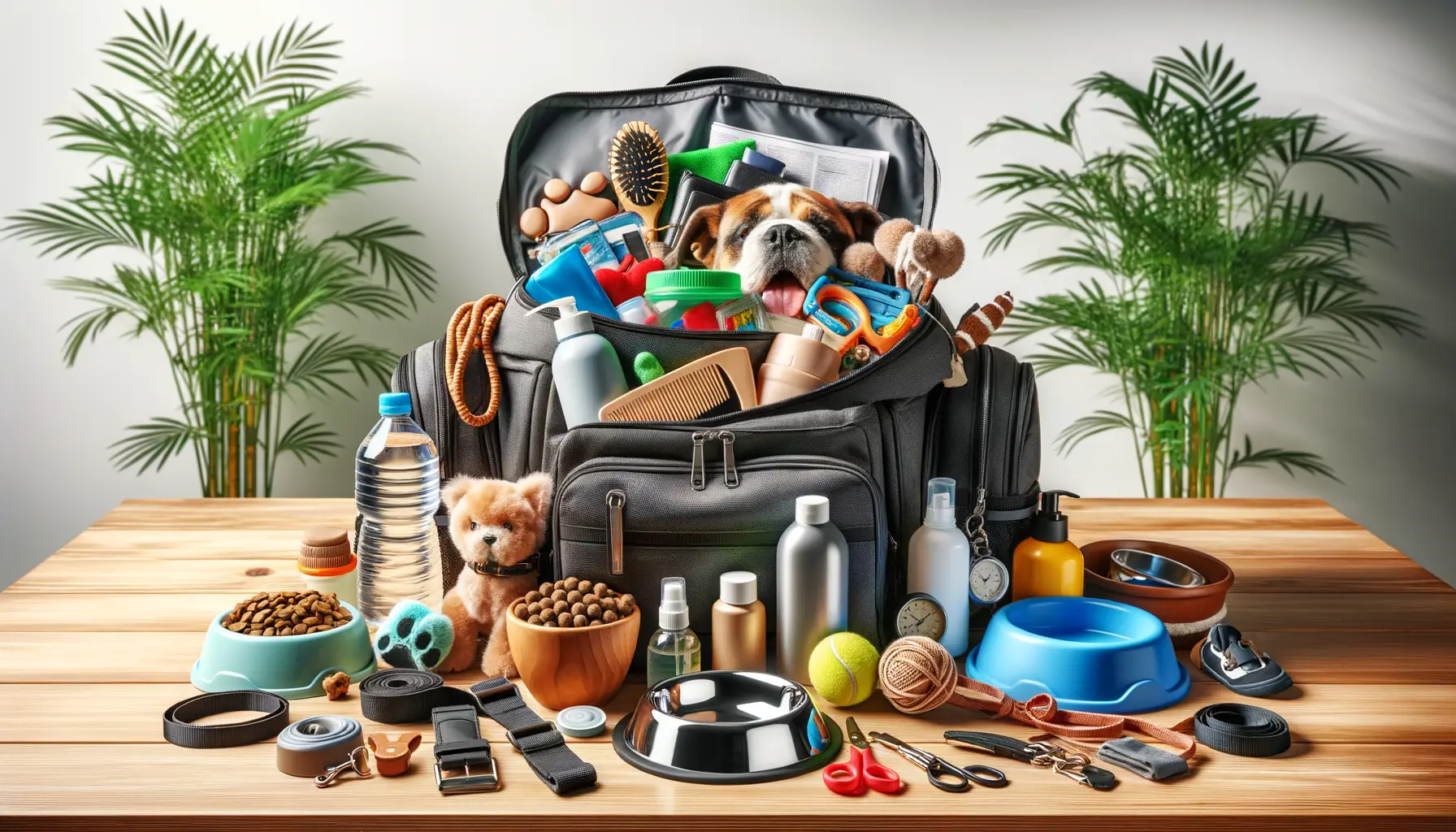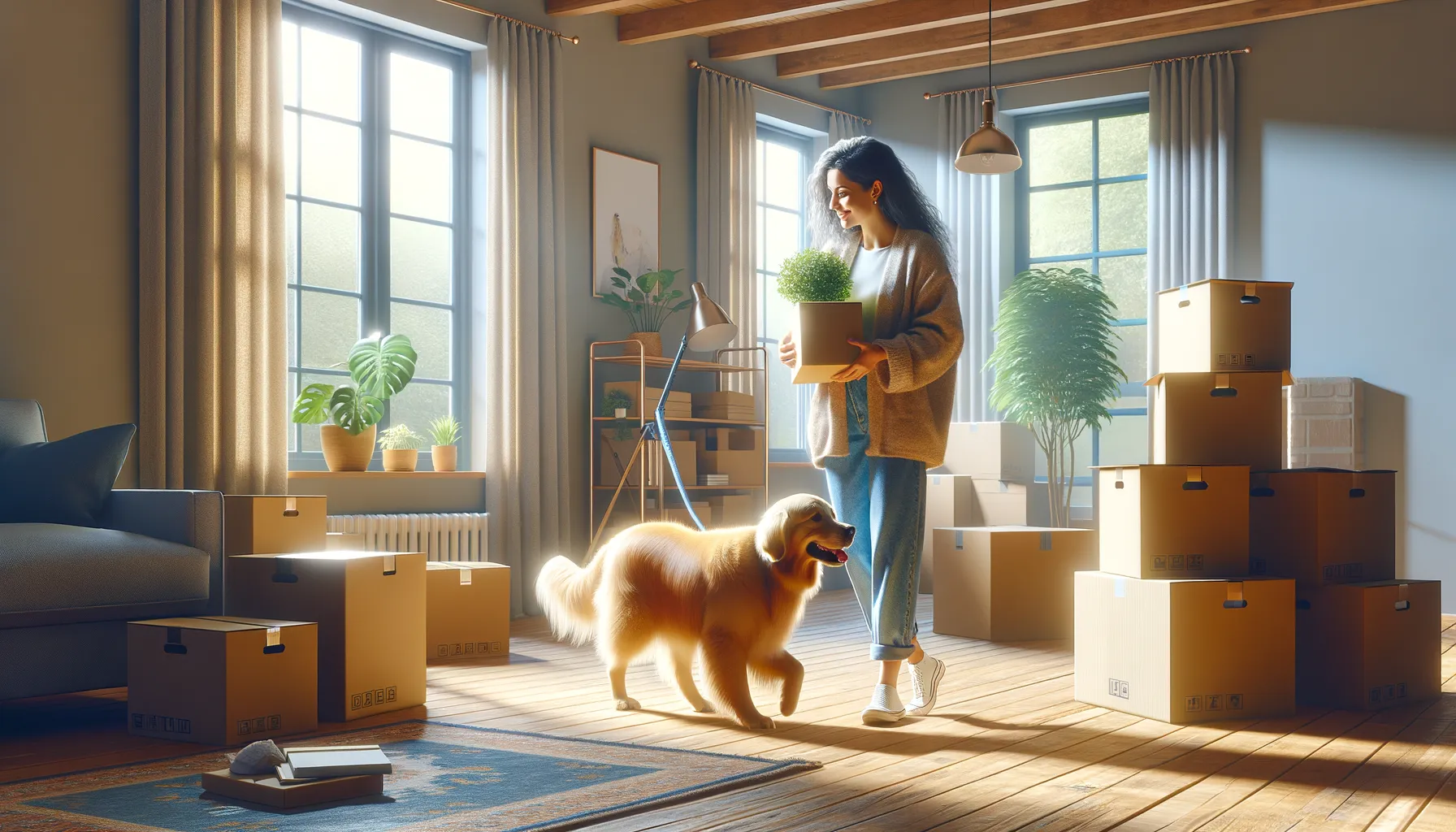Preparing Your Pet for the Move
Building Trust Before the Big Day
Your pet doesn’t understand what a “move” is, but they can definitely sense the whirlwind of change. The best way to ease their nerves? Start making small adjustments early! For example, bring out the carrier or crate a few weeks before the move and let it hang out in a familiar spot. Toss their favorite treats inside and—voilà—it becomes less of a scary monster and more of a cozy den.
Another pro tip: expose your furry friend to boxes. Yes, those cardboard mountains taking over your living room! Let them sniff, climb, or even nap on the packing supplies (bonus points if you capture a hilarious photo). This simple act normalizes all the commotion.
- If possible, visit the new neighborhood with your dog to explore the sights and smells.
- For cats, consider using a pheromone diffuser to create a calming vibe during this transition time.
Special Prep for Anxiety-Prone Pets
Does your pet have a flair for drama during change? You’re not alone! For extra-sensitive animals, stock up on goodies like calming chews or a snug-fitting anxiety vest. You could even create a playlist of soothing music—research shows pups love classical tunes! And don’t forget, the sound of your voice can work wonders. Narrate the moving activities with a cheerful tone so your pet knows everything’s under control.
Packing and Organizing Essentials for Your Pet

Gathering Your Pet’s Must-Haves
Moving with your furry friend? It’s time to channel your inner organizational guru because pets thrive on comfort, even when everything’s in chaos! Start by creating a dedicated “Pet Moving Kit.” Think of it as their personal suitcase bursting with familiarity and love. Here’s what to pack:
- Food and treats: Stick to their regular meals to keep tummies happy.
- Their favorite toy or blanket (yes, even that well-loved, drool-covered one).
- Essential documents: Vaccination records, ID tags, and microchip info—it’s your pet’s passport to a smooth move.
- A collapsible water bowl and extra leashes or harnesses for convenience on the go.
Bonus tip: Label the kit clearly so it doesn’t get lost in a sea of moving boxes. Trust me, your sanity will thank you when your pup’s squeaky duck isn’t MIA.
Strategizing Storage for Easy Access
Here’s something movers forget—your pet shouldn’t feel like an afterthought. Keep daily necessities handy in a bag designated for the car or immediate unpacking. Imagine being mid-drive and realizing your cat’s litter box is buried behind three layers of furniture! Organize a smaller “on-the-road kit” with items like disposable bags, wet wipes, and calming sprays (game changer!).
And don’t just stop there! If your pet takes medication, ensure it’s in an accessible container. Consider surprising them with an extra treat or two during the journey—it’s a small gesture that speaks volumes.
Creating a Pet-Friendly Moving Day Plan

Preparing Your Home Base for Moving Day
Moving day can feel like a tornado ripping through your life, and for pets, it’s no different. But with a little forethought, you can create a cozy, safe haven amidst the chaos. Think of this as your pet’s personal fortress—a sanctuary away from the hustle and bustle of boxes and movers.
Start by securing a quiet room at home (or in a trusted friend’s house if chaos is unavoidable). Stock it with the essentials:
- Your pet’s favorite bed or blanket—the one that still smells like “home.”
- Plenty of fresh water and food for the day.
- A few beloved toys to keep them entertained (this isn’t the day to try new squeaky distractions!).
- A litter box for cats or easy access to a potty break for dogs.
Mastering the Transport Phase
As you transition to the new space, the actual car ride becomes a big part of the day. Make sure your pet feels secure during travel. For smaller animals, use a sturdy, well-ventilated carrier padded with a familiar-smelling item, like an old T-shirt. For larger dogs, a properly fitted seatbelt harness or crate is a must.
Here’s the golden rule: Don’t forget breaks! Imagine how you’d feel being stuck in a car for hours without a pit stop. On longer trips, plan for quick rest stops where your pet can stretch, hydrate, and—let’s be honest—sniff out some new territory.
A little TLC goes a long way on moving day. By focusing on comfort and safety, you’ll set the stage for a smoother transition for both you and your furry companion.
Settling Your Pet Into the New Home

Creating a Cozy Corner for Your Furry Friend
Imagine stepping into a new house where nothing smells like you, feels like home, or sparks a sense of safety. That’s exactly what your pet is experiencing! The first step to making them feel secure is setting up a dedicated space that screams, “This belongs to you!”
Start with the basics: their bed, favorite blanket, and a few beloved toys. Place these in a quiet, low-traffic corner where they can retreat when the world feels overwhelming. If your cat loves their scratching post, bring it front and center. Dogs might prefer a cozy spot away from loud noises like the clatter of unpacking dishes.
Add familiar scents—your pet’s old bedding, an unwashed T-shirt of yours—and watch as their anxiety starts to ebb. Familiar smells act like a giant neon sign that says, “You’re safe here.”
Introduce the New Space Gradually
Avoid overwhelming your pet by introducing the home one room at a time. Try this:
- Start with the room where they’ll sleep or hang out most often.
- Let them explore at their own pace, sniffing and observing.
- Reward calm behavior with their favorite treats or praise—they’ll associate good vibes with the space.
And hey, don’t forget to join them on this mini adventure! Seeing you relaxed and happy sends a powerful message that everything is A-OK.
Common Challenges and How to Overcome Them

Tackling the Stress of an Anxious Pet
Moving with a nervous or anxious pet can feel like juggling flaming torches—tricky, to say the least. Pets are creatures of routine, and all the boxes, packing tape, and upheaval can send their stress levels soaring. Signs might include pacing, whining, or even hiding behind the couch like it’s their fortress.
To help:
- Stick to their daily schedule as much as possible. Feed them at the same time, walk them at the usual hour—consistency is your best ally.
- Set up a “safe zone” amidst the chaos, like a quiet room with their favorite toys, bed, and maybe a sprinkle of treats for comfort.
- During transit, try calming aids such as pheromone sprays or even soft music to keep their nerves in check.
Unexpected Accidents and Mishaps
Let’s be honest: sometimes, things don’t go perfectly. Maybe your cat sneaks out while you’re loading the truck, or your dog decides the new carpet is fair game for marking their territory (oops). These moments are frustrating but fixable!
First, stay calm. Panicking won’t help anyone, least of all your furry friend. Equip yourself with essentials like an extra leash, cleaning supplies, and plenty of patience. For runaway pets, ensure they’re microchipped and wearing updated ID tags—this small step can be a lifesaver if they bolt. And if that brand-new rug gets christened? A mix of white vinegar and baking soda works wonders for cleanup, no judgment needed.